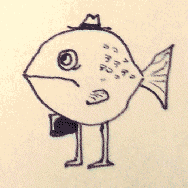Mermaids live in great big mermaid cities, generally – there's safety in numbers in the dangerous deep. Everything is more dangerous in the water, see:
Sea Snakes – much more dangerous than regular snakes. They're extra venemous, travel in herds, and, if we are to define overland movement as two-dimensional in its forward-and-backwardness, then sea snakes move in not just two dimensions, but THREE (thanks to underwater movement's additional upward-and-downwardness).
The scientific name of the Polar Bear, largest and most fearsome of all bears, refers not to his latitude (such might be Ursus septentrionalis), but rather to his aquatic predilections (thus, Ursus maritimus).
Sharks! Clearly more dangerous in the water.
I require no further evidence besides these three cases, especially as that of sharks applies to most all aquatic life (amphibians perhaps being the insidious exception).
So mermaids live in underwater megalopolises; under the leadership of despotic Merkings, of course. But let's not forget they are generally benevolent despots, since mermaids are at heart playful by nature. Merkings are actually pretty surly, though, since they want to lead sailors astray or whatever but it's really they're job to tell other mermaids not to do that sort of thing, since they're kings and that's what kings do. But then I guess other Merkings act on their whims, which is also what kings do, so maybe they're pro-astraying.
Personally, I don't know, because I didn't have the fortune of being born into a noble family, (a noble mer-family, no less), and so I don't know any kings of any variety.
But I've known a lot of exchange students, and in the currents of the deep sea, lo there are many exchange students. They must mostly be mammals, since we're clearly the most superior creatures on the planet – our ilk is that of many of the world's charismatic megafauna. Being an exchange student can warp your charismatic megafauna powers in one of two ways –
you'll either be loved, or hated. Probably both at once. It's just the way things are. You will polarize your friends, and not stopping there, your very mind. This is the eye-opening experience of the exchange student.
Mermaids have to deal with a lot of exchange students. Because of their dense level of undersea urbanization (dense even by a human standard, mind you; we're not holding it against the pretty-near total non-urbanization of the sea floor), they've got the best schools. Merkings don't necessarily put a high priority on education, since they're mostly consumed (either in denial or embrace) with the confusion of sailors; but they do make a point of putting together a pretty good Board of Undersea Ed for all interested parties. And in cities where the Merkings are particularly frustrated by their responsibilities, they obviously make sure EVERYBODY goes to school, rather than harassing sailors.
Everyone wants to harass sailors, Tommy Tunahead, it's not just you. Now sit back down, and tell me where the Mariana Trench is.
In the end, though, I'll bet the ones that have it hardest at Merschool are the octopuses. They're so smart, but so weird-looking. And they can't help but show their feelings, they're totally unable to dissimulate what's going on because the chromatophores in their skin betray emotion. They're the biggest nerds of the ocean; they're that kid you see at lunch and say, "He's either going to be your boss, or your executioner."
Watch out for octopuses; and be nice to them.






